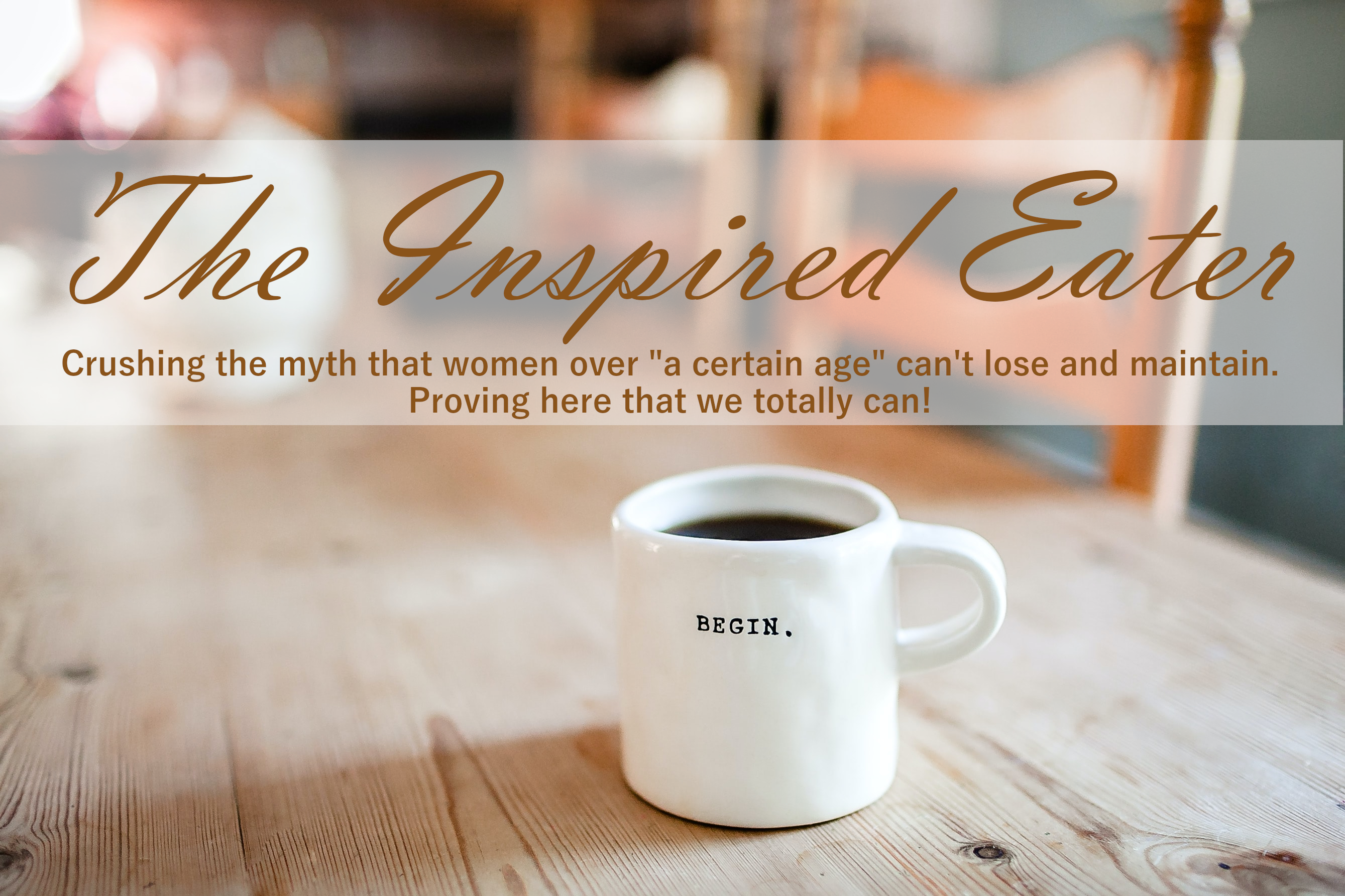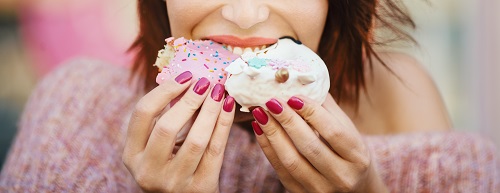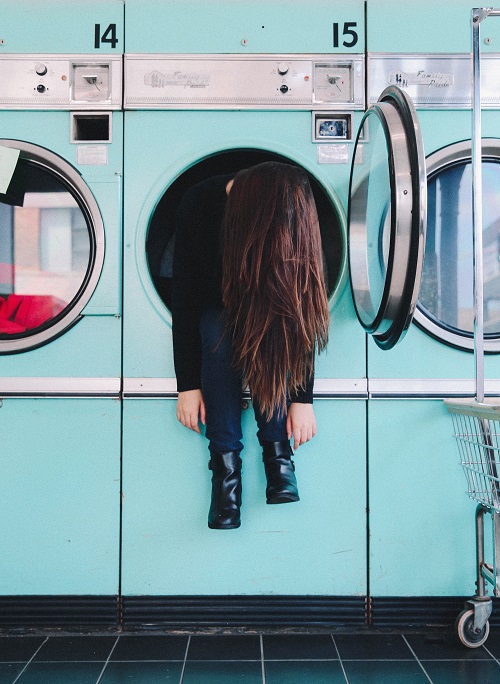Pearl One
Back in the day, I always felt a surge of excitement when I’d start my “diet” whether it was on a Monday morning, at the beginning of May (to be ready for summer) or on New Year’s Day.
And, in every scenario, I’d crash and burn within weeks (sometimes days).
Never once did it occur to me that committing to a future time-frame (I’ll start Monday) went hand-in-glove with the inevitable decimation I’d have a few weeks later.
Now that I’ve maintained my loss for 17 years, it’s become blindingly clear that creating a forever-loss involves about 102 different mind-shifts, skills, and habits.
Our culture pushes the idea that the cool kids live it up over the holidays, but batten down the hatches on January one.
When the new diet loses its luster, it’s become a hilarious cultural norm to say, “At least I made it to February with my resolution intact!!” (Yuck, yuck, yuck.)
But, when we’re alone, we’re not laughing.
If you’ve started the year with a resolve to eat well, take a look at my top tips for spinning a traditional resolution into a forever Smart Eating Lifestyle.
1. The Clarity Anchor.
In Atomic Habits, James Clear writes, “Many people think they lack motivation when what they really lack is clarity.”
I recently heard that the addiction world calls it “a moment of clarity” when something huge has happened to us and we’re changed, but I call it, “deepening our why.”
As I’ve mentioned, I’ve never been one to maintain a workout schedule. So for the first year when I started my yoga/Pilates habit, I’d drive away from my cozy home thinking, it’s for the boys, it’s for the boys, it’s for the boys.
But by the second year, my mantra morphed into, “community! Friends! Strength!”
When we’re burning out on an activity it’s vital to return to your “why” and journal-write about it. Your why may have changed and you might need to ID an entirely new why for the current day.
Put the question to your subconscious and let it solution-solve for you. Journal prompts: I’m so tired of a, b, and c. Which part of the new habit do I particularly dislike? What part do I love? What’s my original why? Does it need deepening? Or do I need a new why altogether? What excuses do I lean on to end the new habit? How do I navigate “boredom”? How do I manage disappointment?
2. Do you Accept Your Natural Rhythms?
As you’re developing a smart new habit, are you working within the parameters of your personality? For example, I’m a morning person, I love animals, and I never embraced skiing (after years on the slopes).
When I make a forever-change in my life I work with who I am. In other words, I’m not a giraffe trying to be a parrot.
Problems often arise when I work way, way outside of “me.”
Example, I can goal myself to create a morning run schedule that sees me heading out the door at 5 a.m. for a run, but – bahaha – I crack myself up.
Will never happen.
My most productive writing time is in the morning from about 8 a.m. to noon. I schedule appointments for the afternoon, when words are difficult and make writing pointless.
In other words, I work within my natural rhythms. Anything less and I’m taking a difficult trek and making it that much harder. Journal prompt: When you hit burn-out, are you working with who you are at your core?
3. Toto, We’re Not in High School Anymore
I call our larger culture “the cool kids.” Thing is, if we live the larger culture norm we’re overeating, yo-yo dieting, and going in and out of a gym membership. The larger culture also spends a fortune on weddings, houses, cars, vacations, clothes, and make-up.
Yes, we have Clark Howard, but mainly we live in debt because, well, “everyone else is.”
Same with overeating. We’re in overeating-debt hoping that the new diet “will work”; the rest of the time thinking, everyone else gets to eat, why not me?
We might even think, it’s silly to spend so much time buying the right food, preparing the right food, and keeping the right food with me in the cold-tote. I mean, who pulls menus up online before eating in a restaurant?
Actually, when weight begins to impact our health, it’s silly not to take losing seriously. Will you have to be super serious forever? (Only if you want to maintain your weight, otherwise meet up with the cool kids for a margarita and a plate of nachos, and call it good.)
4. A Smidge of Tough Love
Become comfortable with the idea that incorporating a new habit is very challenging. Give that to yourself. In other words, instead of asking yourself, “what’s wrong with me? Why can’t I do this? Other people do.”
Tell yourself, “a lot of people can’t – or won’t – do the habit I’m now embedding.”
Whether your goal is to give up ice cream or walk 30 minutes a day, “most people” are struggling. Our culture is packed in food distractions, tech distractions, drinking distractions.
Mainly, we’re living a distracted life.
So when you’re consciously embedding a new habit into your daily, once the honeymoon part of your new habit has spun into the “messy middle,” explain to yourself that what you’re doing isn’t for the faint of heart.
Remind yourself: this is a hard trek we’re forging. If you tell yourself anything less, you won’t bring the right tools and attitude to your new habit formation. Journal prompt: where did I get the idea that losing weight should be easy? Does my family of origin have weight issues? How have they handled staying healthy?
5. Culturally Sanctioned Sky-high Expectations
This title pretty much says it all. We’re bombarded with the idea that weight loss after age 50 “is easy.” Here’s the thing, anyone who promotes the idea that weight loss at any age is easy, has their hand on your wallet.
Maybe if we lived in a wonderland where fast food only sold beautiful salads and fresh fruit, high sugar and salty treats weren’t a thing, and cars didn’t exist and bicycles ruled the world, then we’d all be in amazing shape.
But in our world, we’re trekking the Matterhorn. At least with drugs, cigarettes, and alcohol the larger culture understands why someone would go to rehab or get dry. But tell someone you’ve given up pancakes and waffles, and they might roll their eyes and want to know why.
The larger culture pushes the food-drug as being a happy, celebratory part of our lives. Problem is, we treat every day like it’s Christmas morning. The old days when special food appeared once or twice a year have left the building. Journal-prompts: What are your expectations for yourself? Are you hard on you? How do you internally speak to yourself? How do you manage disappointment? How do you cheerlead yourself?
Burn out is a fancy way of saying that we’ve lost touch with our deeper selves. Embrace your new habit by journal-writing as you go. Stay in touch with you. (Only remember to feed yourself great books, yoga classes, Broadway shows, a rescue dog that’s a whole lot of work, but totally worth it and so forth.)
Maintain what matters most to you.
And breathe in a successful experience. ♥
Pearl Two
Do you mind another James Clear quote? In Atomic Habits James writes that “the greatest threat to success is not failure, but boredom.”
I couldn’t agree more. I’ve done a ton of dumb stuff in my life merely because I was bored. And – as we all well know — eating fun food is surefire way to pinball us straight out of boredom (at least for the moment). Fun food is cheap, fun food is a breeze to attain, and fun food is sanctioned by the world.
When fun food calls to me it means one of three things. I’m either hungry, tired or I’m bored. If I’m all three, I’ve really entered the twilight zone.
Getting un-bored with our new habit isn’t a walk on the beach. The smartest way to give our subconscious a way to “talk” to us is through journal-writing.
Pick up the pen – or keyboard- and discover what makes you sparkle and come up with creative ideas to bring the sparkle to life. ♥
Pearl Three
Our January topic: Dealing well with plateaus or why I ♥ plateauing. Our culture has drilled into us that plateaus are bad and decreasing body weight in a linear fashion is good.
Nope.
Here’s the truth: when we quickly go down, down, down in weight, our cave woman brain wakes up, thinks we’re in a developing country’s famine and gets to work “saving” us (leading us to the highest caloric food she can find).
Our goal is to keep our cave woman snoozing happily and not bothering us. That’s where the plateau is our friend. What comes after a ten pound loss? A month of what I call “holding” or what our culture calls plateauing.
It really is that simple. Become fine with the plateau and let your body adjust to your new weight. After a month of holding, then begin to lose slowly again. ♥
Pearl Four
What I’m packing in my cold-tote this week. I can’t be trusted around nuts. Almonds, walnuts, peanuts (and don’t get me started on pistachios). If I start with one small handful it’s an immediate slide into (many) more handfuls.
Hence, this workaround. I only allow myself nuts that I’ve bagged up in a reasonable portion size and put into my cold-tote. As you know, I take my cold-tote with me when I’m out and about. The cold-tote packed in healthy food keeps me out of the fast food drive-thru and safe when I grocery shop. ♥
Pearl Five
The No. 1 cause of burnout is doing the same thing over and over again and not seeing results.”
— Steve Kaczmarski ♥
And the golden-takeaway is that “results” are different for different people. My result might be having successfully contained my Cookie Monster after 9 p.m.
While your successful result is having created a habit that sees you eating apple slices dipped in peanut butter rather than your afternoon bag of M&Ms. ♥
Also, in the New Year I’ve begun my e-coaching program that will focus on ironclad solutions to your most annoying food problems. For three months (or more, your choice) we’ll email each other at least three times a week looking specifically at how to shift your eating patterns with a goal of a forever weight loss. For the details email me at Wendy@theInspiredEater.com. The price for e-coaching is $49/per month.
Following me on Instagram and Twitter would be awesome!
Have a wonderful week everyone!
♥, Wendy
P.S. Are you new to the Inspired Eater? Welcome!! This blog won’t make much sense until you first read the Aunt Bea post (and you’ll find Aunt Bea on this page to the right under my short bio). On your cell you’ll see it immediately following the first post. After you enter your email address, the Aunt Bea article will be sent to your email’s inbox. If it’s not there, you might check the spam folder. And always feel free to email me at Wendy@TheInspiredEater.com and I’ll get Aunt Bea right to you!
You know the scoop: I’m an Amazon affiliate. If you buy from a link in my post, I’ll receive money, but the arrangement won’t cost you a dime.
I am not an expert, a doctor, a surgeon, a nurse or a nutritionist: the information within TheInspiredEater.com is based solely on my personal experience and is not intended to be used as a substitute for professional medical advice, diagnosis, or treatment. ♥










